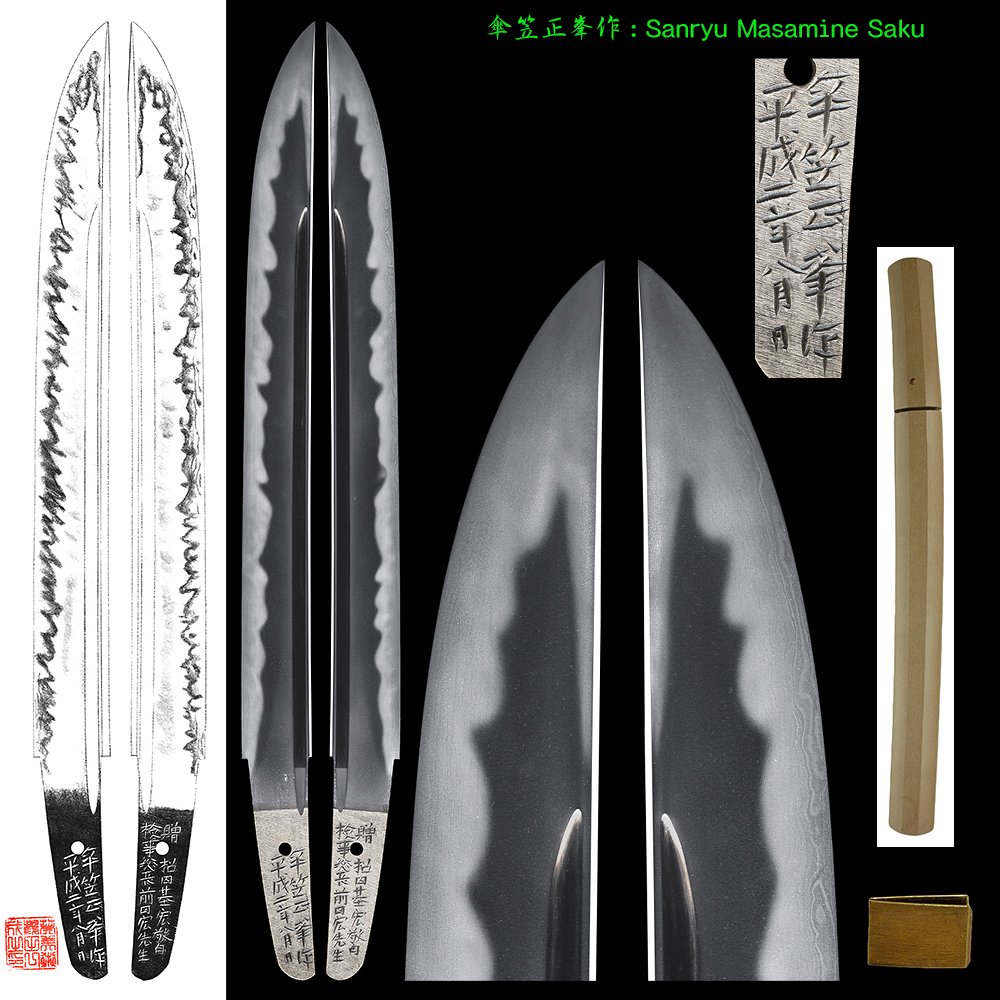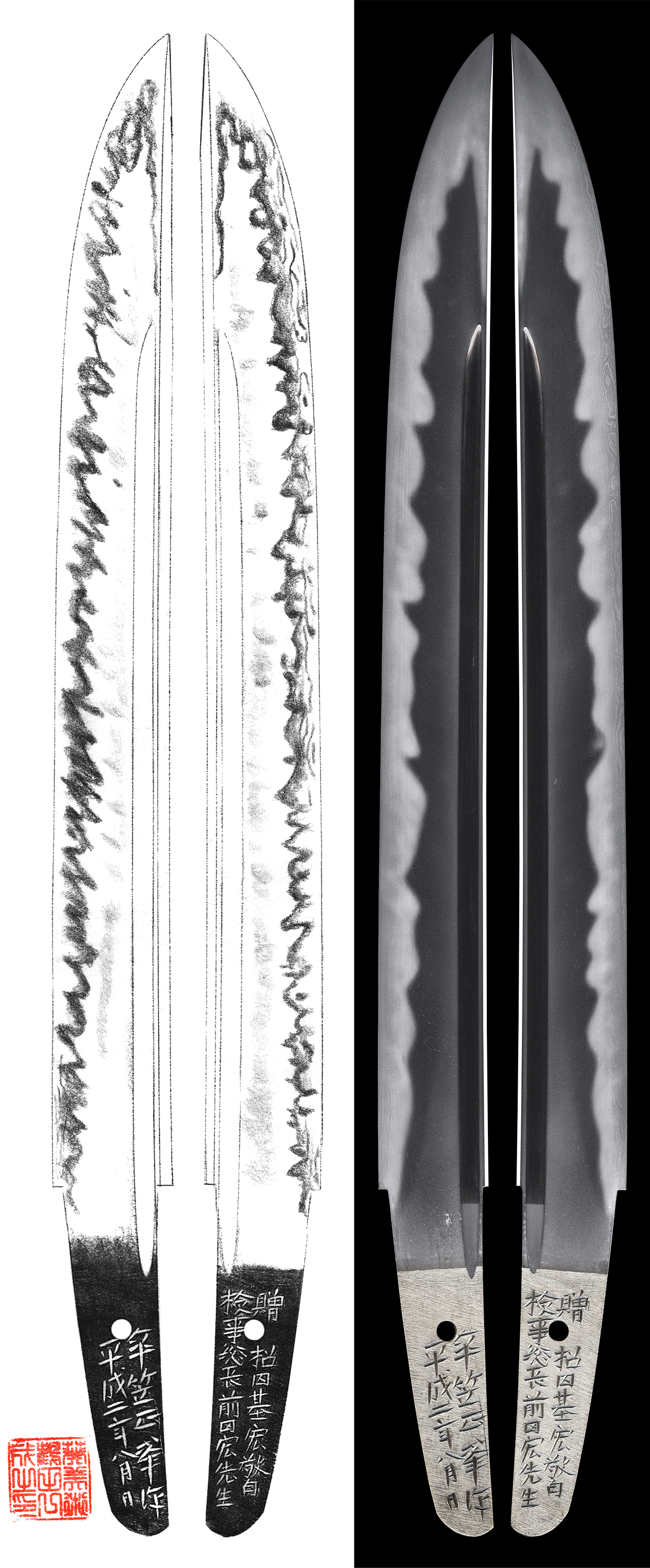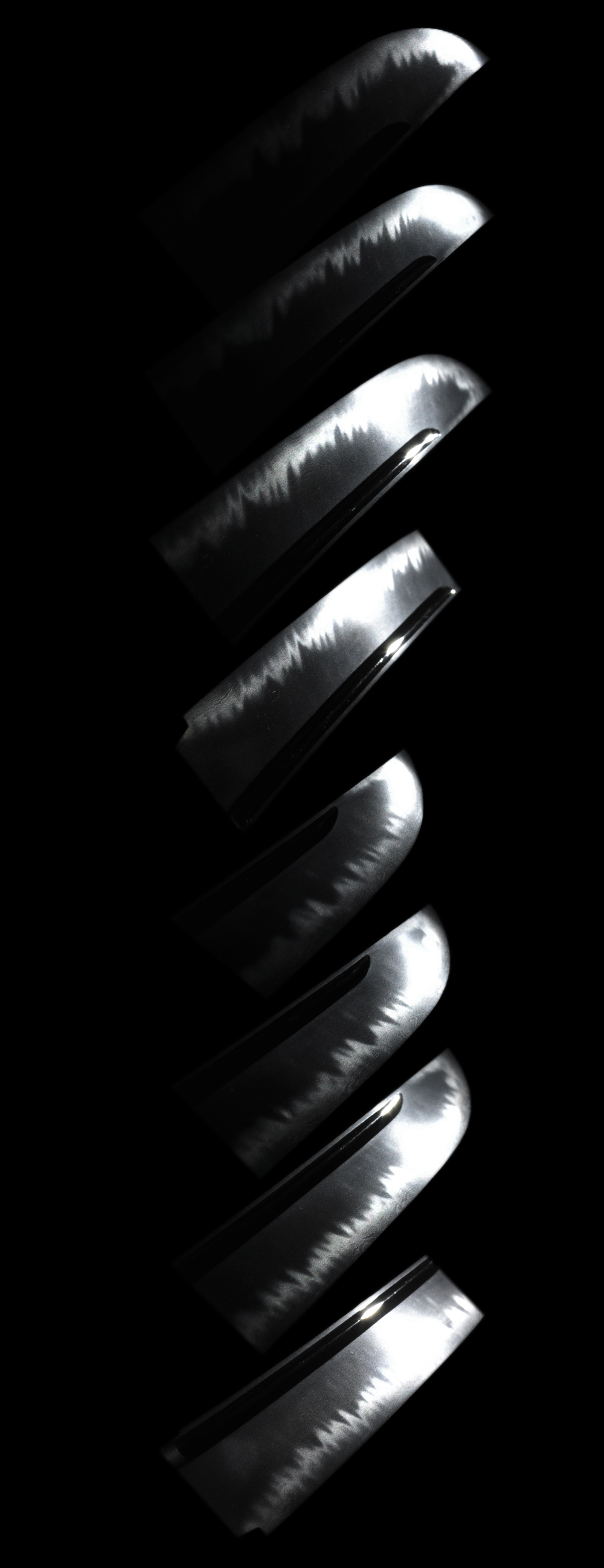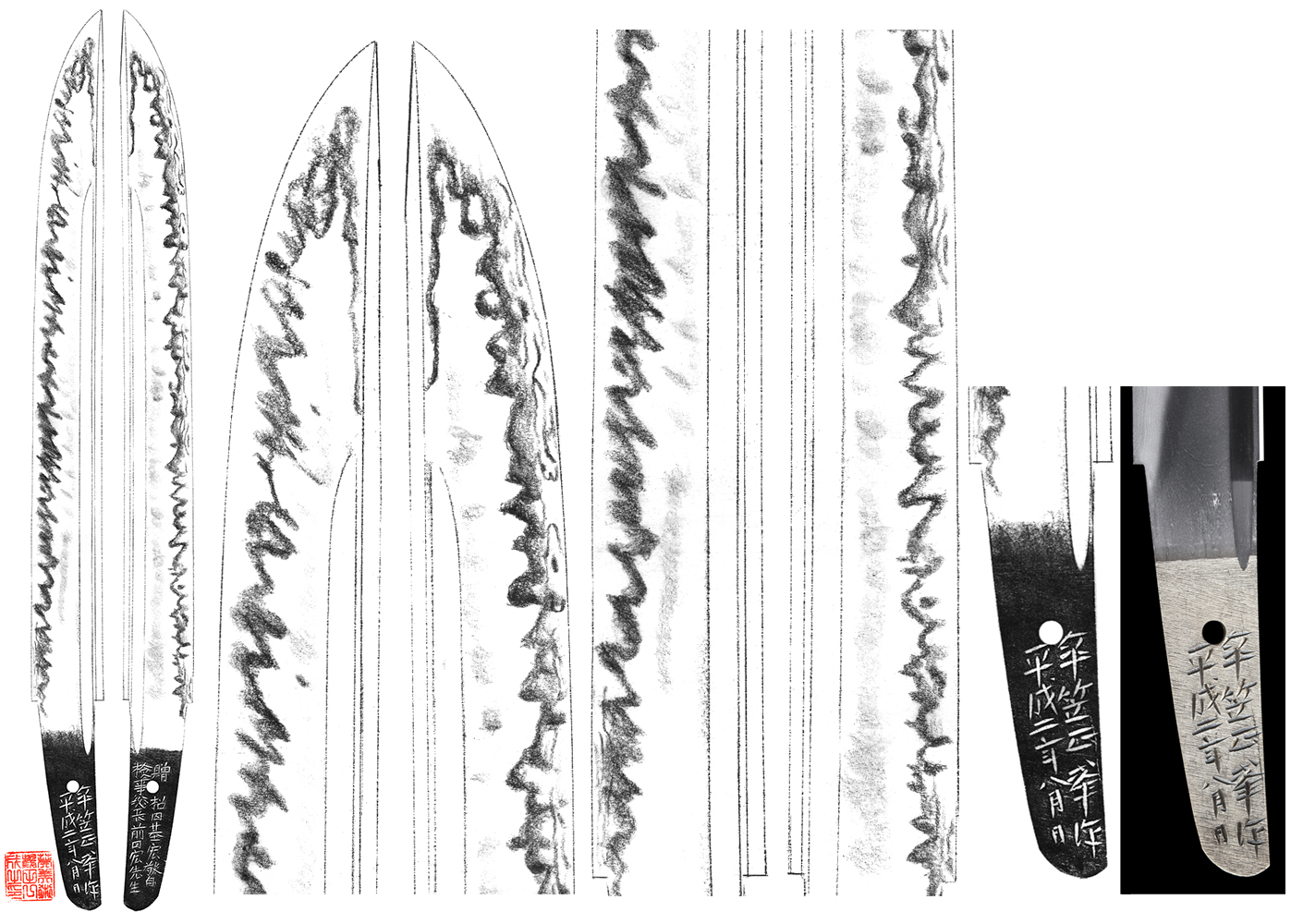Tanto : Sanryu Masamine Saku Heisei 2 nen 8 gatsu Hi (August 1990)
2017/01/04
Tanto in Shirasaya with box
Signature : Sanryu Masamine Saku Heisei 2 nen 8 gatsu Hi (August 1990)
Zo Kenji-Socho Maeda Hiroshi Sensei Matsuda Motohiro Keihaku
Explanation: Mr. Matsuda Motohiro presented the Attorney General Maeda Hiroshi with this Tanto.
(We divide 4 sections for each sword as Saijyo saku, Jyojyo saku
Jyo saku and regular saki)This sword belongs to Saysjo saku ranking.
The blade was polished.
Blade length : 27.4 cm or 10.78 inches.
Sori : 0.2 cm or 0.07 inches.
Mekugi : 1
Width at the hamachi : 2.86 cm or 1.12 inches.
Kasane : 0.50 cm or 0.19 inches.
Era : Modern times (August 1990)
Shape : Wide and thick nice shape Tanto. There are Bo-hi on both side.
Jitetsu : Ko-Itame Hada well grained with Jinie attached.
The Jinage is blackish and beautiful.
There are wounderful Choji Uchuri.
Hamon : Ko-Nie Deki, Sakasa Choji Midare with deep Nioikuchi. There are many Ashi.
Special feature : Sumitani Masamine, born Sumitani Yoichiro in 1921 was a swordsmith in Ishikawa pref.
Major in mechanical engineering and graduated from Ritsumeikan university in Kyoto,
he entered the researce institute of Japanese sword on the campus in 1941 and learned under Sakurai Masayuki,
the Second son of a famous swordsmith Sakurai Masatsugu. After that he moved to Onomichi city in Hiroshima pref.
and learned forging and polishing sword at Kokoku Nihonto Tanren-Jo with his sworn brother Yokota Masamitsu.
In the postwar Japan, Masamine set up his own smithy named Sanryutei in 1956 and studied Bizen-den.
He forged special swords to dedicate the Ise-jingu shrine in 1964, 1966, 1969 and 1989.
He became a Mukansa-tosho and a judge of the annual sword-making competition held by NBTHK in 1966.
In pursuit of Bizen-den, he completed especially choji-midare hamon called Sumitani-Choji.
He also studied old iron manufacturing in Kamakura period and reproduced classical texture of jitetsu.
Masamine was designated one of a preservers of Important Intangible Cultural Assets,
popularly known as Living National Treasures in 1981. He passed away in 1998.
This blade looks like Aoe. There are many works in Ha. And also Utsuri is very nice.
On the back of Nakago, there is the name Maeda Hiroshi. He have a military background.
After that he became a Attorney General in 1988.
We guess that Masamine made an intense effort to make this blade.
Aoi Art estimatin paper : whole Oshigata.




